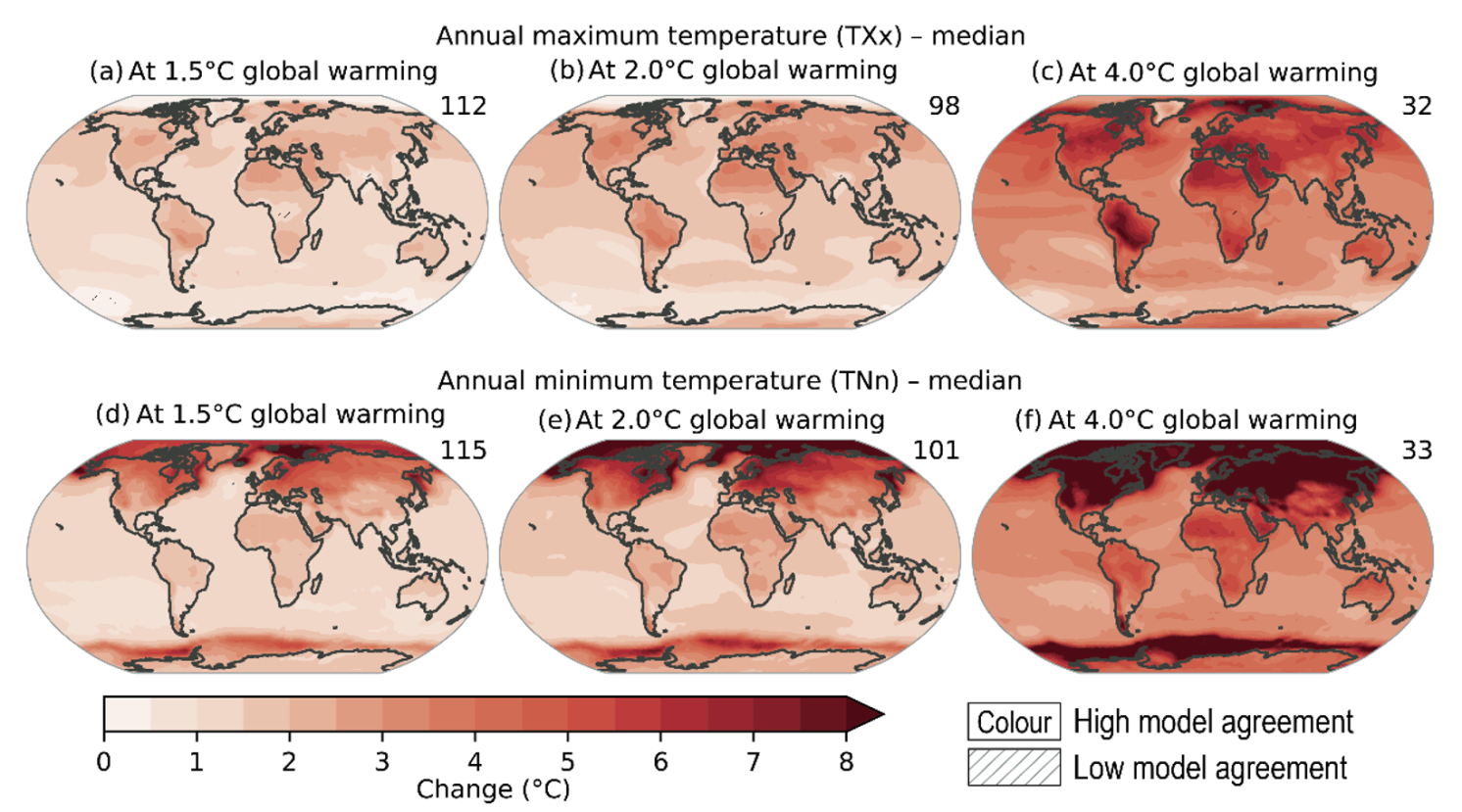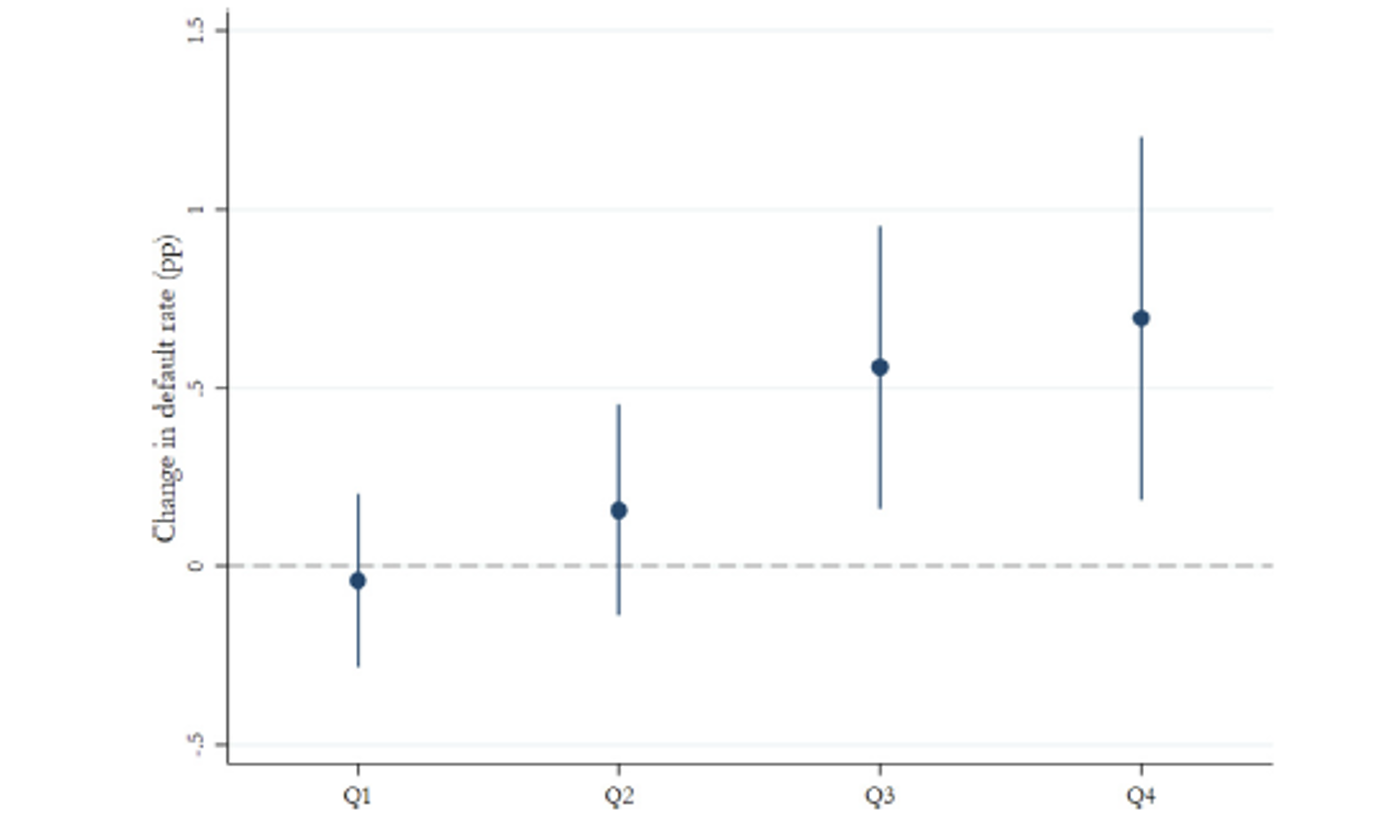Heatwaves ripple into the financial system
A recent report from the International Panel on Climate Change reveals a consistent rise in extreme heat days, affecting agriculture and beyond. Economic repercussions include reduced labour productivity and increased operational costs. Recent studies also emphasise climate's financial sector impact, especially in low- and middle-income economies. This column delves into Mexican financial vulnerabilities, revealing the link between extreme heat and increased delinquency rates, particularly among small and medium-sized enterprises. Policy must address these risks, coupling climate resilience with enhanced credit access for vulnerable firms.
Central banks and other financial institutions are increasingly concerned about the impact of these shocks on the financial sector (Reinders et al. 2023). The effect of unfavourable weather on costs and demand may create liquidity shortages for firms that could cause solvency problems. In developing countries, several conditions suggest that firms may be more vulnerable. Suppose, for instance, the defaults generated by the shock increase lenders’ uncertainty about borrowers’ ability to repay their loans in the future. In that case, they might charge higher interest rates for new loans and reduce credit availability, increasing firms’ credit constraints. This is especially relevant for credit types for which the ability to repay is more uncertain, such as new small and medium-sized enterprises (SMEs) with scarce credit history, or for firms needing investment loans, which have longer maturity and higher uncertainty about future profits that the investment would generate. Overall, the impact of independent and identically distributed shocks could be longer-lived when hitting credit markets that deal less efficiently with informational asymmetries such as those in low- and middle-income economies.
Moreover, it is important to note that warming is not projected to affect countries homogeneously. Most developing countries are in regions with higher baseline temperatures. Hence, even uniform warming could have disparate impacts due to hard biological limits for agricultural yield and human health. However, current models project significant heterogeneity in local warming, as shown in Figure 2. For all the reasons above, understanding the impacts of extreme weather events on the financial sector in developing countries is of high policy relevance.

In our recent study (Aguilar-Gomez et al. 2024), my co-authors and I employ a robust methodology and a comprehensive dataset encompassing information on all loans extended by commercial banks to private firms in Mexico over a span of nearly a decade. This allows us to delve into potential climate vulnerabilities within the Mexican financial system. Specifically, we estimate the impact of unexpected days above the 95th percentile of the temperature distribution on firms’ financial distress, with our primary focus on the delinquency rate, measured as the ratio of non-performing loans to total outstanding credit in a county.
Our study reveals three main findings:
- Extreme heat in a municipality raises its credit delinquency rate, an effect driven entirely by small firms defaulting on their loans. In terms of magnitudes, ten unusual days of extreme heat during the previous three months increase the delinquency rate of SMEs by 0.17 percentage points, equivalent to 4.4% of the observed sample mean (3.9%). Figure 3 displays this phenomenon by plotting the relationship between the default rate and the days of extreme heat in the previous quarter. It also shows that the heatwave has to be long enough to cause significant damage (i.e. 11 days). This finding is consistent with the notion that SMEs in developing countries are less equipped to cope with extreme temperatures, making it more difficult to access further credit in times of financial stress. Consistent with theory and previous research (e.g. Schlenker and Roberts 2009, Blanc and Schlenker 2017), we find that the negative effect of extreme heat is stronger in agriculture.
- Regional economic composition matters. Extreme heat also has sizeable effects on non-agricultural industries in regions with a sufficiently large proportion of agricultural workers. Furthermore, effects in the non-agricultural sector are concentrated in services and retail, that is, non-tradable sectors that rely heavily on local demand. The findings suggest that adverse conditions in agriculture lead to reduced local spending, causing spillover effects into non-agricultural industries.
- By employing diverse market integration measures in agriculture production, we find that weather shocks have a stronger effect on credit default among agricultural firms in more integrated markets. This result is consistent with the notion that a price surge partially offsets a decrease in local production caused by extreme weather in more isolated markets. Interestingly, this evidence implies that financial institutions may be less vulnerable to temperature shocks in relatively isolated markets.
- One might be less concerned about these results if our data indicated that firms recover and do not carry longer-run implications of short-run shocks. We find that temperature shocks reduce the number of firms with access to credit in the affected municipality for some time. Credit composition also changes after the weather shock: we find a decrease in credit for investments and new firms, along with a rise in interest rates for new loans. Specifically, exposure to extreme heat translates into increased interest rates for new loans within the same firm, heightened collateral requirements, and declined credit access. Together, the firm- and market-level results show that in response to shocks, banks tighten credit for two to three quarters, hindering access to financial flexibility when firms most need it. These findings contrast with those found in advanced economies, particularly the US, where the evidence suggests that firms use credit lines to manage liquidity during extreme weather (Brown et al. 2021, Collier et al. 2020). Mexican SMEs seem unable to use new loans similarly.

Conclusion and policy recommendations
Our findings provide empirical support to the concerns regarding the potential effects of extreme weather on the financial system described, for instance, in Reinders et al. (2023). In response to accumulating evidence, regulatory authorities, and central banks worldwide are calling for improvements in measuring and monitoring climate risks, such that relevant actors can manage such risks (Litterman et al. 2020). One policy implication of our results is that policies seeking to reduce direct exposure to climate shocks in banks’ balance sheets would ideally be implemented along with other complementary policies, especially in developing countries. Such policies could compensate for unintended consequences by deepening small and medium firms’ access to credit, especially when firms are coping with the impact of weather shocks.